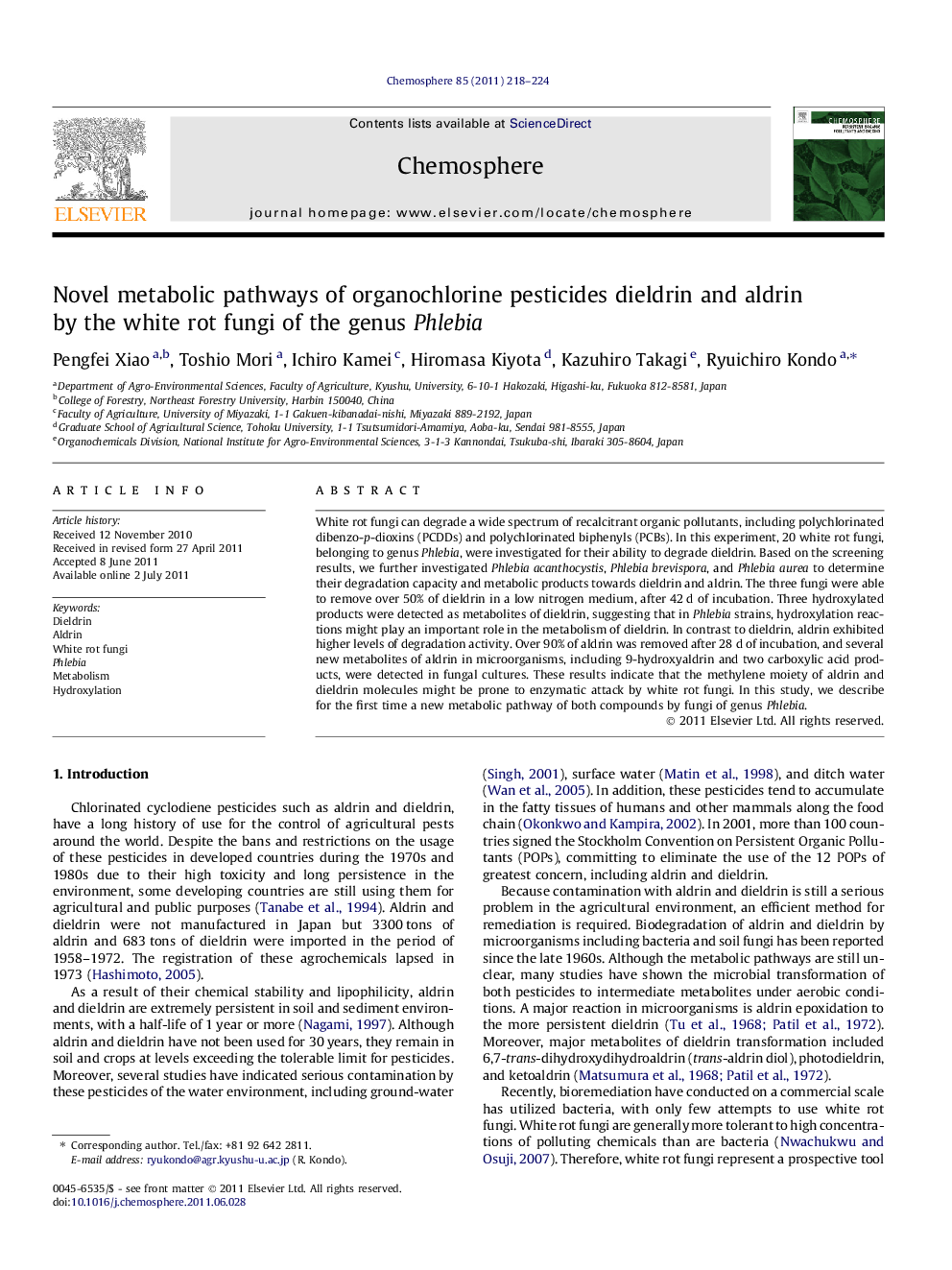| Article ID | Journal | Published Year | Pages | File Type |
|---|---|---|---|---|
| 4410465 | Chemosphere | 2011 | 7 Pages |
White rot fungi can degrade a wide spectrum of recalcitrant organic pollutants, including polychlorinated dibenzo-p-dioxins (PCDDs) and polychlorinated biphenyls (PCBs). In this experiment, 20 white rot fungi, belonging to genus Phlebia, were investigated for their ability to degrade dieldrin. Based on the screening results, we further investigated Phlebia acanthocystis, Phlebia brevispora, and Phlebia aurea to determine their degradation capacity and metabolic products towards dieldrin and aldrin. The three fungi were able to remove over 50% of dieldrin in a low nitrogen medium, after 42 d of incubation. Three hydroxylated products were detected as metabolites of dieldrin, suggesting that in Phlebia strains, hydroxylation reactions might play an important role in the metabolism of dieldrin. In contrast to dieldrin, aldrin exhibited higher levels of degradation activity. Over 90% of aldrin was removed after 28 d of incubation, and several new metabolites of aldrin in microorganisms, including 9-hydroxyaldrin and two carboxylic acid products, were detected in fungal cultures. These results indicate that the methylene moiety of aldrin and dieldrin molecules might be prone to enzymatic attack by white rot fungi. In this study, we describe for the first time a new metabolic pathway of both compounds by fungi of genus Phlebia.
► White rot fungi of the genus Phlebia can degrade dieldrin and aldrin. ► Dieldrin was metabolized to some new hydroxylated products. ► Aldrin was metabolized to hydroxylated product and carboxylic acid products. ► The methylene moiety of aldrin and dieldrin be prone to enzymic attack by fungi. ► We describe for the first time novel metabolic pathways of both compounds.
